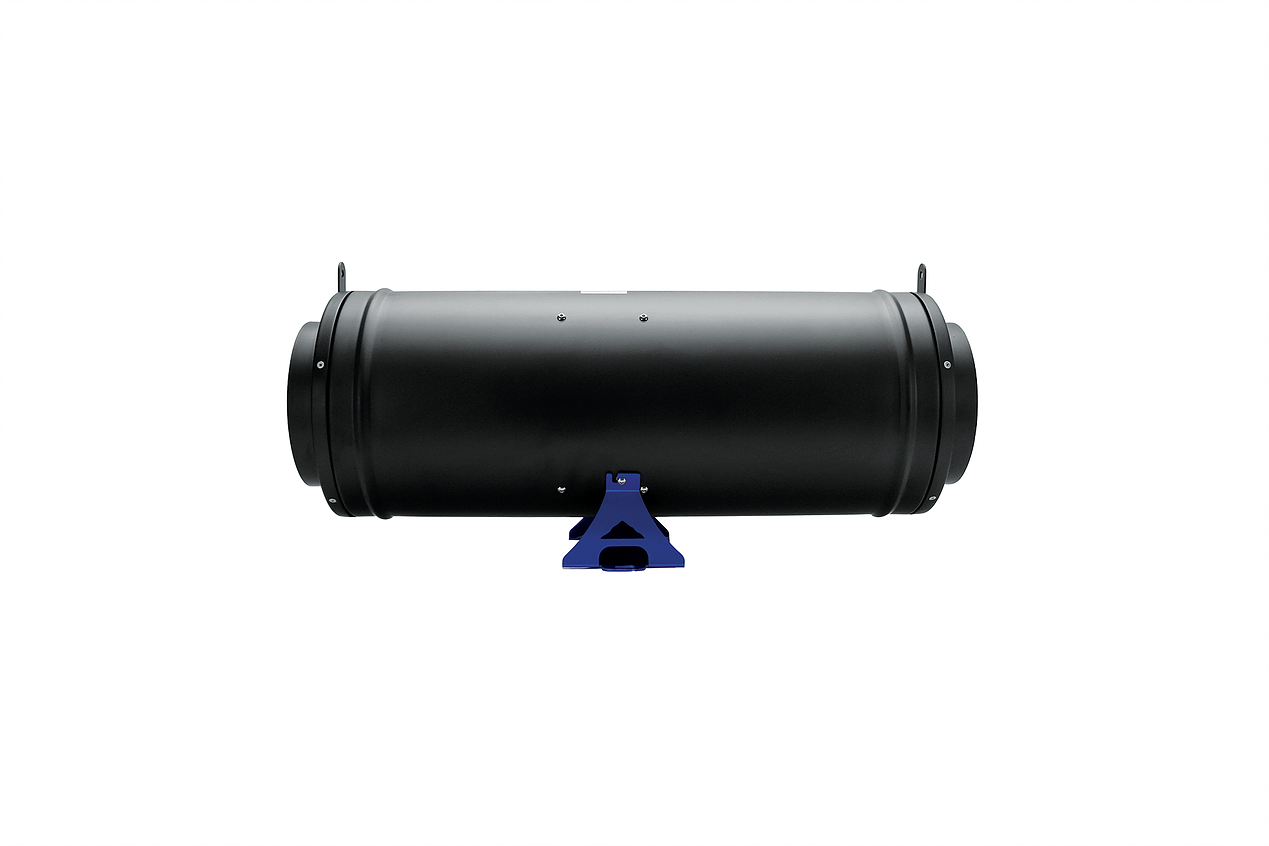EC vs AC Fans: Efficiency & Control in Airflow Management
By ebmpapst | 5 June 2018

What’s so special about an EC fan?
EC fans are generally recognised as being the latest thing in energy efficient air movement technology, but what is an EC fan and what makes it so special?
Although ebm-papst, the market leader in EC technology, is a German company, EC has nothing to do with the European Community! In this case, EC stands for Electronically Commutated which basically means it is a fan with a brushless DC motor.
DC motors
Basic DC motors rely on carbon brushes and a commutation ring to switch the current direction, and therefore the magnetic field polarity, in a rotating armature. The interaction between this internal rotor and fixed permanent magnets induces its rotation. In an EC motor, the mechanical commutation has been replaced by electronic circuitry, which supplies the right amount of armature current in the right direction at precisely the right time for accurate motor control. Matters are further simplified by using a compact external rotor design with stationary windings. The permanent magnets are mounted inside the rotor with the fan impeller attached.
Brushless DC motors have been around for many years but there has always been the need for a separate DC power supply. In applications using only an AC supply this introduced added cost and complexity. Then, in 2003, ebm-papst brought out an EC fan with integrated electronics which could be connected directly to an AC mains supply. In addition to performing the commutation, the electronics convert AC to DC and control the fan speed by regulating the power to the motor.
Put simply, DC motors are around 30% more efficient than AC motors because the secondary magnetic field comes from permanent magnets rather than copper windings. An AC motor consumes additional energy solely to create a magnetic field by inducing a current in the rotor. But this is only half the story. The use of modern electronics in controlling the motor has opened up many other possibilities which contribute to using less power.
Control options
To control the motor accurately and efficiently the integrated electronics have to continuously monitor the motor speed and adjust the control input. By making this circuitry available to external sources it’s possible to provide simple speed control options. Dependent on the motor type, any sensor which can provide a 0-10V/PWM or 4-20mA input can be directly connected to provide closed loop control for temperature, pressure or whatever parameter you choose to measure. No need to worry about DC supplies for the sensors either, this is provided by another connection on the motor. In fact, simply connect a potentiometer and you have infinitely variable speed control. No triacs, no frequency inverters and no whining noises! An EC motor under speed control is virtually silent.
EC is easy
How does this affect energy efficiency?
Doubling the speed of a motor increases its power input by a factor of 8 so it’s very wasteful to run a fan faster than is required. If you can tailor the fan speed to match the demand, the potential for energy saving is huge. Even when compared to on/off operation, EC speed modulation is much more efficient.
EC fans can also contribute to increasing the overall efficiency of an application. In a cooling system for example, keeping the refrigerant pressure constant rather than having it rise and fall as fans switch on and off has been found to reduce the load on the compressor resulting in even greater energy saving.
If two motors are producing the same output but one has a greater power input then you can be sure that the surplus energy is being dissipated as heat. If an application is designed to remove heat then it will have to do extra work just to remove the heat produced by the fan motor itself, so EC fans will improve the efficiency of the whole system.
AC vs. EC
AC motors are designed to operate at a certain point on their performance curve which coincides with their peak efficiency. Either side of this operating point, the efficiency can drop off considerably. EC motors on the other hand have an almost flat efficiency curve which varies relatively little across the speed range, a range which is not limited by synchronous speeds or as susceptible to voltage fluctuations as an AC motor. This makes the EC fan much more flexible in terms of being able to use the same product to match the performance requirements of different applications while still benefitting from increased efficiency.
The available range of AC input EC fans is expanding all of the time. There are axial and centrifugal fans, forward curved and backward curved, single inlet and double inlet, single phase and three phase and they are often directly interchangeable with their AC equivalents. EC offers the OEM more than just energy-efficiency. It is an opportunity to bring new technology and functionality to their products. With ever-increasing demand for energy efficient systems, when it comes to fan based products, there’s no reason for manufacturers not to have any in their portfolio.
.jpg)



